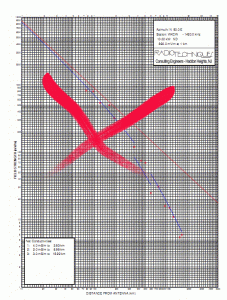AM stations rarely have regular listeners outside the 1 mV/m groundwave contour because noise levels preclude interference free service, and because few if any stations have night service to areas with weak day signals. The solitary exception are class A stations which have large service areas and interference free night groundwave coverage. Since most revenue for AM stations comes from within the 5 mV/m contour, it makes sense to optimize that coverage, since any coverage at below 1 mV/m is of marginal value. The increase of the 5 mV/m signal is most easily achieved with greater power. In order…
The NAB and the RIAA are busy cooking a deal for radio stations to pay music royalties to performers. To make things appear better for Radio stations, the deal includes a scheme to put an FM analog radio into all cellphones by law.
Radio stations have paid royalties to composers for playing music on the air, but not to the performers. This is because radio has traditionally been a great way for performers to promote their music. That logic is no longer so firm, now that websites, streaming services and music appliances compete with radio for the…
All India Radio tested the AM single channel Digital Radio Mondiale (DRM) simulcast system on a 100 kW transmitter last year. Unlike the DRM simulcast system that was tested around 2002 which used two adjacent channels, which clearly would not work in the USA, this system used operates on a single channel using an ingenious method of squeezing the digital carriers completely within a +/- 5 kHz channel!
This means that the DRM simulcast signal will occupy LESS bandwidth than a normal AM 10 kHz analog signal. Good-bye first adjacent channel hash! The DRM signal described in US…
From CGC Communicator – The new KSON(AM) tower was
completed and activated today at about 4:30 p.m. according
to Joel Saxberg who performed the RF matching. The tower is
grounded at its base and skirted to permit RF to be induced
onto the structure.
(more…)
The FCC has issued waivers of the requirement to visually check tower lights annually instead of every three months when using a high tech monitoring system. Flash Technology’s ArgusON monitors have won the confidence of regulators to let broadcasters cut back on these visual inspections.
This is partcularly valuable when the tower site is remote, or difficult to reach during winter.
The FCC has not said why, but it has postponed indefinately its decision on letting AM stations use FM translators.
More when we know!

Consultants and Station Owners have been asking for twenty years for relief on burdensome rules to prove the performance of directional antennas for AM stations.
Last week the shoe finally dropped, and the Commission approved as a notice of proposed rulemaking, the analysis of directional antennas using Method-Of-Moments and rigorous monitoring standards to verify that AM antennas actually perform as they should. The new rules only apply to series fed, non-toploaded, non sectionalized towers.
For stations meeting the specifications, it means a substantial decrease in cost to…
I was just looking at the Fiscal Year ’08 table of FCC regulatory fees for AM radio stations. At first I didn’t believe it, but Daytimers in small markets are getting screwed!
Class B stations, with real full-time service are hit with a $500 annual fee in the smallest markets, but daytimers (which have equivalent daytime facilities to class B stations, but only operate during sunlight hours) have to pay an extra $25 for the privilege of shutting off at night. Stations in these little markets are public services, and the FCC ought to pay them to…
 Radio Currents reports that the first two Mexican stations have started broadcasting in HD Radio.
Radio Currents reports that the first two Mexican stations have started broadcasting in HD Radio.
XEEZ 970 Radio Palacios is broadcasting an AM HD Radio signal from the U.S./Mexico border town of Caborca, Sonora, using a Broadcast Electronics transmission system.
XHTY-FM 94.5 in Tijuana on the FM Side has installed a Nautel V10 HD Radio transmitter. The station is operated by Uniradio.
The FCC released a new “Public and Broadcasting” manual that is
required to be in your station’s Public Inspection File.
Here is the link to the manual. It can be downloaded below.
http://www.fcc.gov/mb/audio/decdoc/public_and_broadcasting.pdf
Courtesy of Jim Pollock, PE


